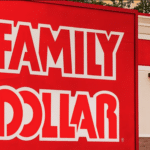
It may cost you several dollars to buy something at Family Dollar, while Dollar Tree’s selling point has always been that every item in the store is just $1. Now, though, the common owner of the two dollar store chains is flipping the script – Family Dollar will begin selling more items for just $1, while Dollar Tree will begin selling items with a price tag of $1.25, $1.50, $2 or more.
But while the company seems excited about the changes at Family Dollar, it’s shaking up Dollar Tree’s format begrudgingly – and all but predicting that customers won’t like it.
So then why do it? Because a major shareholder is demanding it.
“We’re open to ideas, good ideas that work,” Dollar Tree CEO Gary Philbin told investors yesterday. One of those ideas is “introducing multiple price points at Dollar Tree”, which Philbin said “we are open to”.
So Philbin said Dollar Tree is “thoughtfully and carefully” introducing the concept to “specific locations”. While he didn’t say where exactly, or in how many stores for starters, he did say it would be in areas served by distribution centers that stock both Dollar Tree and Family Dollar stores. That likely refers to the company’s joint distribution centers in Utah and Missouri, which serve a wide swath of the Central and Western U.S., from Missouri, up to North Dakota and Montana, and all the way back down to Arizona.
So if you shop at a Dollar Tree in that general area, keep an eye on the prices – because they may be changing.
Hedge fund Starboard Value, one of Dollar Tree’s largest investors, first pushed the idea back in January.
“Other dollar stores and discount retailers have moved away from a single price point approach with tremendous success,” Starboard wrote in a public letter addressed to Philbin. “By introducing a few additional low price points, while keeping the majority of products priced at $1.00, we believe that Dollar Tree could dramatically improve its product assortment and offer far more value to its customers” – and to its shareholders, Starboard said.
By stubbornly sticking to a three-decade-old “arbitrary price ceiling of $1.00,” Starboard argued that Dollar Tree simply isn’t living up to its potential. “The value that Dollar Tree has offered its customers has deteriorated because of the need to fit everything into a $1.00 price point. Products today are smaller or of lower quality than they were five, ten, and certainly thirty years ago,” Starboard’s letter went on. “There are items that are not even available at Dollar Tree stores today because of the company’s strict adherence to the $1.00 price ceiling.”
So it suggested keeping the majority of products priced at $1, with “a few new price points added to stores”, such as $1.25, $1.50, or $2.
Philbin’s response was, essentially: We’ve tested that before and it didn’t work, but if you really want us to, we’ll test it again – just don’t get your hopes up.
“Our previous testing of this concept has demonstrated that ‘Everything’s A Dollar’ is an incredibly powerful part of our value proposition,” Philbin told investors. “Customers continue to choose Dollar Tree for the values they are able to get for only $1 for every item.” About a dozen years ago, Dollar Tree tried selling some items priced at more than a dollar in about 50 stores, but ultimately abandoned the test after determining that customers didn’t like it. “Quite frankly, the customer research at the end of day tells us what our customer sees on this,” Philbin said.
But if one of Dollar Tree’s largest shareholders is demanding another test, then Dollar Tree will conduct another test. “We’ll be all over this thing,” Philbin pledged.
If the boss appears to be only reluctantly tweaking Dollar Tree’s pricing structure, though, he’s much more enthused about changing things up at Family Dollar. In addition to adding more freezers and coolers, and new product categories like alcoholic beverages, a number of newly-renovated Family Dollar stores now feature Dollar Tree merchandise with Dollar Tree’s $1 price tag. “This last touch has been very successful in driving traffic to these stores, many of which are in rural locations, where a Dollar Tree would not be as successful,” Philbin explained.
So in contrast to the multiple price-point test at Dollar Tree, “at Family Dollar, we’ve effectively tested the opposite, introducing a broader range of dollar price point items to the multi-price point format,” Philbin said – a model that he contends “works very well”.
But color Starboard unimpressed. Because another demand in its January letter was for Dollar Tree to consider “strategic alternatives for the underperforming Family Dollar business” – including unloading it.
Family Dollar has been a drag on the company’s profits since Dollar Tree acquired its competitor back in 2015. “Unfortunately, Dollar Tree significantly overpaid for Family Dollar, and this business is proving to be a meaningful distraction,” Starboard wrote. “While we understand that the company is confident in the accelerated renovation plan, rather than allowing the distraction of Family Dollar to continue to fester, draw significant resources, and adversely impact the company, we believe Dollar Tree should explore all strategic alternatives for Family Dollar, including a sale of the business.”
So far, at least, Philbin hasn’t acquiesced to that.
But largely overshadowing the latest on the Family Dollar renovations and the Dollar Tree pricing test was the news yesterday that as many as 390 Family Dollar stores would be closing in the coming year. Philbin didn’t identify any specific stores, and cautioned that the number could change, but said they were all “underperforming stores that because of age, layout, location, unfavorable lease terms or other factors are not expected to provide an adequate return on investment for the cost of renovation.”
The good news is that the company opened 60 brand-new Family Dollars over the past few months, and plans to open 200 more in the year to come. So if your local Family Dollar ends up on the list of stores to be closed, there’s a chance a brand-new one may be opening not too far away.
That’s if Dollar Tree manages to keep its shareholders happy. So for now, you may notice that some things will cost more at Dollar Tree, and some will cost less at Family Dollar. Whether either experiment succeeds, or something more drastic occurs, remains to be seen. As Philbin concluded – succinctly but perhaps tellingly – “All I can say for now is, more to come on this.”
Image source: Dollar Tree














Of course, Dollar Tree had another brand (Deal$) that they eliminated after buying Family Dollar which worked fairly similarly, offering items at varying price points (though I think most were even, like $2, $3, $5 etc.).
Perhaps they just need a way to “split” the stores – have part where everything stays $1 and the other where prices vary, rather than two separate brands as they do now.